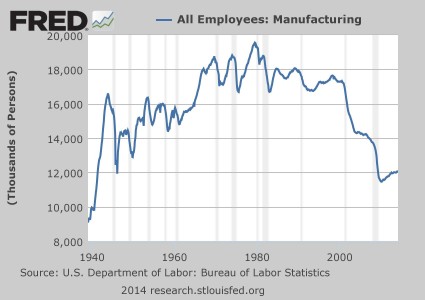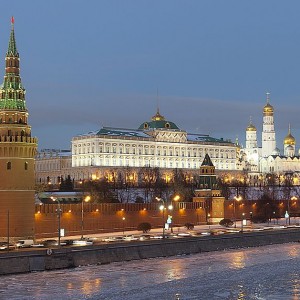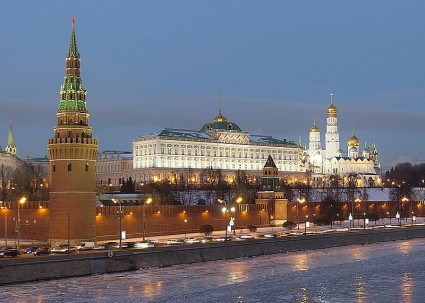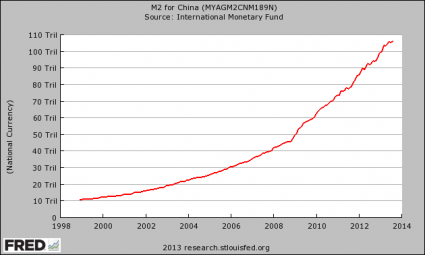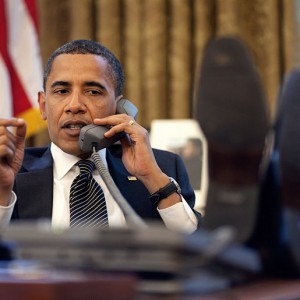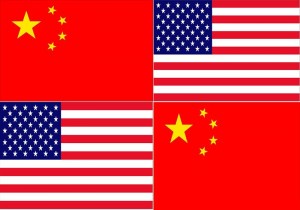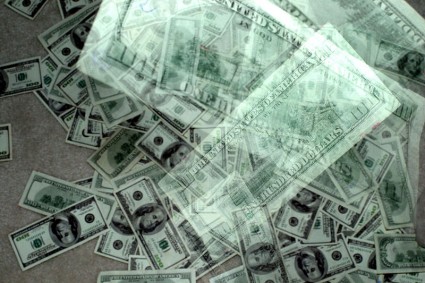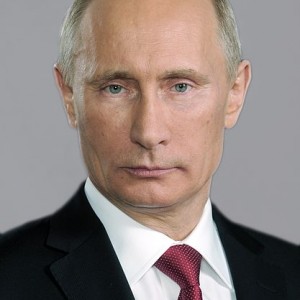 Russia and China have just signed what is being called “the gas deal of the century”, and the two countries are discussing moving away from the U.S. dollar and using their own currencies to trade with one another. This has huge implications for the future of the U.S. economy, but the mainstream media in the United States is being strangely quiet about all of this. For example, I searched CNN’s website to see if I could find something about this gas deal between Russia and China and I did not find anything. But I did find links to “top stories” entitled “Celebs who went faux red” and “Adorable kid tugs on Obama’s ear“. Is it any wonder why the mainstream media is dying? If a particular story does not fit their agenda, they will simply ignore it. But the truth is that this new agreement between Russia and China is huge. It could end up fundamentally changing the global financial system, and not in a way that would be beneficial for the United States.
Russia and China have just signed what is being called “the gas deal of the century”, and the two countries are discussing moving away from the U.S. dollar and using their own currencies to trade with one another. This has huge implications for the future of the U.S. economy, but the mainstream media in the United States is being strangely quiet about all of this. For example, I searched CNN’s website to see if I could find something about this gas deal between Russia and China and I did not find anything. But I did find links to “top stories” entitled “Celebs who went faux red” and “Adorable kid tugs on Obama’s ear“. Is it any wonder why the mainstream media is dying? If a particular story does not fit their agenda, they will simply ignore it. But the truth is that this new agreement between Russia and China is huge. It could end up fundamentally changing the global financial system, and not in a way that would be beneficial for the United States.
Russia and China had been negotiating this natural gas deal for ten years, and now it is finally done. Russia is the largest exporter of natural gas on the entire planet, and China is poised to become the world’s largest economy in just a few years. This new $400 billion agreement means that these two superpowers could potentially enjoy a mutually beneficial relationship for the next 30 years…
Russia reached a $400 billion deal to supply natural gas to China through a new pipeline over 30 years, a milestone in relations between the world’s largest energy producer and the biggest consumer.
President Vladimir Putin is turning to China to bolster Russia’s economy as relations sour with the U.S. and European Union because of the crisis in Ukraine. Today’s accord, signed after more than a decade of talks, will allow state-run gas producer OAO Gazprom (GAZP) to invest $55 billion developing giant gas fields in eastern Siberia and building the pipeline, Putin said.
It’s an “epochal event,” Putin said in Shanghai after the contract was signed. Both countries are satisfied with the price, he said.
Of course countries sell oil and natural gas to each other all the time. But what makes this deal such a potential problem for the U.S. is the fact that Russia and China are working on cutting the U.S. dollar out of the entire equation. Just check out the following excerpt from a recent article in a Russian news source…
Russia and China are planning to increase the volume of direct payments in mutual trade in their national currencies, according to a joint statement on a new stage of comprehensive partnership and strategic cooperation signed during high-level talks in Shanghai on Tuesday.
“The sides intend to take new steps to increase the level and expansion of spheres of Russian-Chinese practical cooperation, in particular to establish close cooperation in the financial sphere, including an increase in direct payments in the Russian and Chinese national currencies in trade, investments and loan services,” the statement said.
In my recent article entitled “De-Dollarization: Russia Is On The Verge Of Dealing A Massive Blow To The Petrodollar“, I warned about what could happen if the petrodollar monopoly ends. In the United States, our current standard of living is extremely dependent on the rest of the world continuing to use our currency to trade with one another. If Russia starts selling natural gas to China without the U.S. dollar being involved, that would be a monumental blow to the petrodollar. And if other nations started following the lead of Russia and China, that could result in an avalanche from which the petrodollar may never recover.
And it isn’t just the national governments of Russia and China that are discussing moving away from the U.S. dollar. For example, the second largest bank in Russia just signed a deal with the Bank of China “to pay each other in domestic currencies”…
VTB, Russia’s second biggest lender, has signed a deal with Bank of China, which includes an agreement to pay each other in domestic currencies.
“Under the agreement, the banks plan to develop their partnership in a number of areas, including cooperation on ruble and renminbi settlements, investment banking, inter-bank lending, trade finance and capital-markets transactions,” says the official VTB statement.
The deal underlines VTB Group’s growing interest in Asian markets and will help grow trade between Russia and China that are already close trading partners, said VTB Bank Management Board Vasily Titov.
You can almost feel the power of the U.S. dollar fading.
A few months ago, when I wrote about how China had announced that it no longer planned to stockpile more U.S. dollars, I speculated that it may be evidence that China planned to start making a big move away from the U.S. dollar.
Well, now China’s intentions have become even more clear.
The Chinese do not plan to allow the United States to indefinitely dominate the globe financially. In the long run, the Chinese plan to be the ones calling the shots, and that means that the power of the U.S. dollar must decline.
These days, instead of piling up mountains of U.S. currency, China has started accumulating hard assets instead. In the past, I have written about how China is rapidly stockpiling gold, and it turns out that the Chinese have also been very busy stockpiling oil as well…
China is stockpiling oil for its strategic petroleum reserve at a record pace, intervening on a scale large enough to send a powerful pulse through the world crude market.
The move comes as tensions mount in the South China Sea and the West prepares possible oil sanctions against Russia over the crisis in eastern Ukraine. Analysts believe China is quietly building up buffers against a possible spike in oil prices or disruptions in supply.
The International Energy Agency (IEA) said in its latest monthly report that China imported 6.81m barrels per day (bpd) in April, an all-time high.
Once upon a time, China was extremely dependent on the United States economically. The same was true with most of the rest of the world.
But now economic power has shifted so dramatically that nations such as Russia and China are realizing that they don’t really need to be dependent on the United States any longer.
And with each passing year, the relationship between Russia and China is becoming stronger. As Pepe Escobar recently observed, this emerging alliance is causing quite a bit of consternation in Washington…
And no wonder Washington is anxious. That alliance is already a done deal in a variety of ways: through the BRICS group of emerging powers (Brazil, Russia, India, China, and South Africa); at the Shanghai Cooperation Organization, the Asian counterweight to NATO; inside the G20; and via the 120-member-nation Non-Aligned Movement (NAM). Trade and commerce are just part of the future bargain. Synergies in the development of new military technologies beckon as well. After Russia’s Star Wars-style, ultra-sophisticated S-500 air defense anti-missile system comes online in 2018, Beijing is sure to want a version of it. Meanwhile, Russia is about to sell dozens of state-of-the-art Sukhoi Su-35 jet fighters to the Chinese as Beijing and Moscow move to seal an aviation-industrial partnership.
Meanwhile, the relationship that the U.S. has with both nations is quickly going sour. The crisis in Ukraine has caused relations with Russia to drop to the lowest point since the end of the Cold War, and now China is deeply offended by charges that Chinese military officers have been involved in cyberspying on the United States…
China on Tuesday warned the United States was jeopardizing military ties by charging five Chinese officers with cyberspying and tried to turn the tables on Washington by calling it “the biggest attacker of China’s cyberspace.”
China announced it was suspending cooperation with the United States in a joint cybersecurity task force over Monday’s charges that officers stole trade secrets from major American companies. The Foreign Ministry demanded Washington withdraw the indictment.
The testy exchange marked an escalation in tensions over U.S. complaints that China’s military uses its cyber warfare skills to steal foreign trade secrets to help the country’s vast state-owned industrial sector.
The divide between the East and the West is growing.
But the Obama administration has not figured out that we need the East more than they need us.
Right now, the number one U.S. export is U.S. dollars. Our massively inflated standard of living is very heavily dependent on the rest of the world using our currency to trade with one another and lending it to us at super low interest rates.
If the rest of the world quits playing our game, our debt-based financial system will quickly fall apart.
Unfortunately, nobody in the Obama administration seems to have much understanding of global economics, and they will probably continue to antagonize Russia and China.
In the end, the consequences for antagonizing them could end up being far greater than any of us ever imagined.


